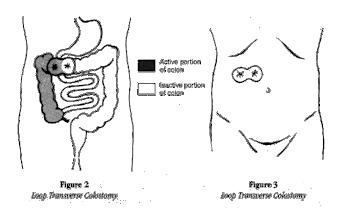An opening appearing on the abdominal skin to allow urine to pass out is known as a urostomy. This urinary diversion generally requires a person to wear an ostomy bag to manage urine evacuations. The best thing about it is that it doesn’t restrict you to a less active lifestyle once you recover from surgery.

Reasons you may need to a urostomy
You will need a urostomy if you are unable to pass urine through your natural urinary tract. There can be several reasons for it, but we are going to mention only a few.
- Bladder cancer
- Structural defects in the urinary tract
- Chronic inflammation
- Muscle problem
Complications
A urostomy can result in some complications, but those are preventable. Complications related to a urostomy may include skin irritation, blockage in the passage of urine, bleeding, blood clots, infections, and fluid buildup inside the abdomen.
Your doctor will tell you about the factors that elevate the risk of complications. Those risk factors could include alcohol consumption, smoking, and some chronic diseases like diabetes.
The procedure
Before the procedure starts, your doctor will run some tests to make sure that you are physically fit to undergo the procedure. Those tests may include a physical exam, blood test, urine test, CT scan or MRI, urography, and cystoscopy.

The surgical procedure will start after you fall asleep under the impact of general anesthesia. This way, you will feel no pain during the procedure. You can control postoperative pain with the help of medication, which you can talk about with your doctor.
During the surgical procedure, the surgeon will remove the diseased bladder. He will take a small piece of ileum, which is going to serve as a conduit. He will then connect ureters to one end of the conduit, and pull the other end through a small incision in the belly. That end will stick out on the abdomen to serve as a stoma. The surgeon will suture this end of the conduit to the abdominal skin to prevent its prolapsing or sinking. The skin around the stoma is known as the peristomal skin, and it holds a vital value in the ostomy care regimen. Any complications to this part of the skin can result in a compromised seal between the ostomy pouch and the abdominal skin.
An alternative to a urostomy that involves the ileal conduit is the continent urostomy. The continent urostomy consists of an internal pouch constructed of tissues taken from the bowel. It has a reasonable capacity to store urine, so you don’t need to wear an ostomy bag. You will need to empty this internal pouch 6-8 times a day, though. To draw out urine, you will need a catheter, which you will insert into the abdominal opening. The best thing about a continent urostomy is that it gives you total control over when to get rid of urine.
There is another way to treat the urinary tract’s issues: neobladder. It uses an internal pouch just as a continent urostomy. It, however, uses the urethra to expel urine from the body.
After the procedure
You will not be in your optimum health during the first few weeks after surgery. The first week will be specifically painful. Fortunately, you can start living an active and healthy life after recovering from surgery. You may want to discuss it with your doctor or ostomy care nurse.











